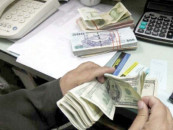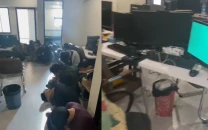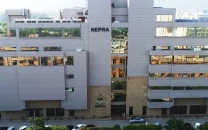Student transport in a shambles
Karachi University’s collapsing bus system highlights years of neglect and the urgent need for sustainable reform

The University of Karachi - one of Pakistan's largest public universities - now finds itself crippled by a worsening transport crisis. With more than 47,000 students and only 30 decrepit buses on the road, thousands of students are left stranded daily, struggling to reach campus. Once a proud symbol of accessible education, the university's point service has been reduced to a shadow of its former self.
For over 14 years, not a single new bus has been added to the fleet. The existing vehicles, some nearly two decades' old, break down frequently and guzzle fuel inefficiently. The university's administration bears equal responsibility for allowing this crisis to drag on for so long. Chronic mismanagement and absence of long-term planning have crippled the system from within. Instead of proactively seeking a solution, the administration has let a critical issue turn into a full-blown institutional failure. Students from far-flung areas of Karachi - many from low-income households - are forced to choose between expensive private transport and missing classes altogether. But as the crisis deepens, an opportunity emerges to rebuild the transport system on sustainable lines. The Sindh government must intervene not merely by adding more buses, but by modernising the fleet with eco-friendly, electric or hybrid vehicles. Doing so would not only solve the immediate transport crunch but also align the university with global trends in sustainable mobility.
With Karachi's worsening air quality and rising fuel costs, such a transition is a necessity, even though it would take a good amount of funding. The move towards green transport could set a precedent for other public institutions in Pakistan. By investing in renewable-powered buses and efficient scheduling systems, the government can turn a failing service into a model of sustainable public mobility.














COMMENTS
Comments are moderated and generally will be posted if they are on-topic and not abusive.
For more information, please see our Comments FAQ